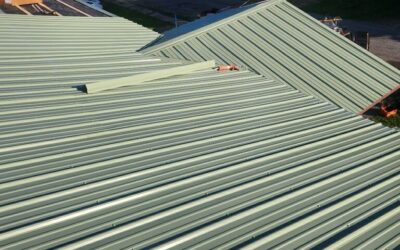Roofing Granules: What Are They? Why Are They Important?
When it comes to roof maintenance, one of the often overlooked yet crucial components of asphalt shingles is the roofing granules. These small, sand-like particles cover the surface of your shingles, playing an integral role in the protection and longevity of your roof. But what exactly are roofing granules? Why are they important? And what should you do if you notice granules in your gutters or downspouts? In this blog, we will dive deep into roofing granules, explaining their purpose, how they work, and how to identify signs that might indicate your roof needs attention.
At S&K Construction And Remodeling LLC, we are experts in roofing services throughout Northeast Ohio. As a trusted Owens Corning Preferred Contractor, we believe in educating our customers on all aspects of roof maintenance, and roofing granules are an essential part of that. Read on to learn everything you need to know about roofing granules and why they should be a part of your roof care routine.
What Are Roofing Granules?
Roofing granules are the small, mineral-based particles that cover the surface of asphalt shingles. These granules are made from crushed rock, typically a combination of minerals like slate, basalt, or ceramic. They are applied to the surface of asphalt shingles during the manufacturing process to provide the shingles with their distinctive color and texture. These granules are then bonded to the shingles with a special adhesive.
Roofing granules serve several essential functions, including protecting your shingles from environmental factors and enhancing the roof’s overall aesthetic appeal. They are crucial for the long-term health and durability of your roof, so understanding their role is essential for homeowners and property managers alike.
Types of Roofing Granules
Roofing granules come in different types, and their composition can vary based on the manufacturer and type of shingle. Some of the most common types include:
1. Ceramic Granules
Ceramic granules are made from natural minerals that are heat-resistant and help protect the roof from ultraviolet (UV) rays. These granules are often used in higher-end shingles, offering a high level of durability and protection against weather elements. Ceramic granules can reflect UV rays, which helps to regulate your home’s temperature by keeping it cooler in the summer months.

2. Slate Granules
Slate granules are another type of roofing granule, often used in traditional asphalt shingles. These granules are more commonly used in architectural or designer shingles and are favored for their distinctive appearance. Slate granules help provide additional strength to the shingles and contribute to their longevity.
3. Basalt Granules
Basalt granules are made from volcanic rock and are used in the production of durable roofing materials. These granules are often seen in shingles designed for harsher climates. Basalt granules offer great protection against physical damage, including wear from wind and hail.
4. Stone Granules
Stone granules are natural minerals that are crushed and used as a coating for asphalt shingles. These granules are typically seen in more affordable roofing options and provide sufficient protection for your roof while being cost-effective.
The Different Colors of Roofing Granules
Roofing granules come in a variety of colors, and this variety serves both aesthetic and functional purposes. While the color of roofing granules can enhance the curb appeal of your home, certain colors also offer different benefits related to energy efficiency and UV protection.
Some of the most common colors for roofing granules include:
- Black: Provides the highest heat absorption, which is beneficial for cold climates.
- Gray: A neutral color that complements many architectural styles.
- Green and Blue: Often used for aesthetic purposes and typically found in designer shingles.
- Red and Brown: Provide excellent UV protection and help maintain the roof’s temperature.
The Importance of Roofing Granules
Roofing granules play a crucial role in the overall functionality and longevity of your roof. Their benefits go beyond just adding color to your shingles. Here are some reasons why roofing granules are so important:
1. UV Protection
One of the primary roles of roofing granules is to provide UV protection for your roof. The granules protect the asphalt base of the shingles from the harmful effects of the sun’s rays. Without this protection, the shingles can degrade quickly, leading to cracks, curling, and an increased risk of leaks.
UV radiation can break down the chemical structure of asphalt shingles, which is why granules act as a barrier to prevent premature aging. The granules absorb and reflect UV rays, extending the lifespan of your roof.
2. Weather Resistance
Roofing granules provide an added layer of protection against the elements. They help shield the shingles from extreme weather conditions, including heavy rain, hail, and snow. This protective layer prevents water from penetrating the shingles and helps maintain the integrity of the roof. Granules also improve the shingle’s resistance to high winds, keeping them in place and preventing potential damage.
3. Preventing Roof Wear and Tear
Over time, your roof faces constant wear and tear from natural elements like rain, snow, wind, and heat. Roofing granules act as a protective barrier between your shingles and these elements, helping to reduce the overall wear on your roof. The granules help to deflect the force of rain and hail, minimizing the impact of water on the shingles.
4. Energy Efficiency
Certain types of roofing granules, especially lighter-colored granules, can reflect the sun’s heat away from your roof. This helps to keep your home cooler during the summer months, reducing the amount of energy needed for air conditioning. This can lead to significant savings on your energy bills over time.
5. Aesthetic Appeal
Roofing granules come in a variety of colors and textures, which can enhance the curb appeal of your home. Whether you prefer a classic, neutral look or something more modern and vibrant, there is a wide range of granules available to match the architectural style of your home. The aesthetic value of roofing granules can add to your home’s overall beauty and increase its market value.
6. Protecting Your Home’s Interior
By preventing leaks and reducing the risk of water damage, roofing granules help to protect your home’s interior. A roof with sufficient granule coverage ensures that rainwater doesn’t seep into your home, which could cause damage to ceilings, walls, and insulation. Additionally, the granules help to prevent mold and mildew growth, which can be detrimental to your indoor air quality.
Signs of Roofing Granule Loss
While roofing granules are designed to last for many years, they will naturally wear down over time due to weather exposure and other factors. However, excessive granule loss can indicate that your roof is nearing the end of its life or is suffering from significant damage. Here are some signs to look out for:
1. Granules in Gutters
One of the most common signs that your roof is losing granules is finding an accumulation of granules in your gutters or downspouts. If you notice an excessive amount of granules in these areas, it may be time for a roof inspection. It’s normal for a small amount of granules to shed during a rainstorm, but a large amount could signal that your shingles are aging or damaged.
2. Shiny or Bald Spots on Shingles
If you notice that your shingles are developing bald or shiny spots where the granules have worn off, this is a clear sign of granule loss. These exposed areas are more vulnerable to the elements and could lead to further damage if not addressed promptly.
3. Curling or Cracked Shingles
Granule loss can also contribute to shingles curling, cracking, or breaking. Without the protection provided by the granules, the shingles are more likely to deteriorate under extreme weather conditions. This can lead to leaks and other issues that require roof replacement.
4. Age of the Roof
As mentioned earlier, roofing granules are meant to protect your roof for a specific amount of time. As your roof ages, the granules will naturally wear down. If your roof is nearing the end of its expected lifespan (typically 20-30 years for asphalt shingles), it’s essential to monitor for signs of granule loss.
What to Do If You Notice Granule Loss
If you notice signs of granule loss, it’s essential to take action quickly to prevent further damage. Here’s what you can do:
- Schedule a Roof Inspection: Contact a professional roofing contractor like S&K Construction And Remodeling LLC for a roof inspection. A qualified expert will be able to assess the condition of your roof and determine if granule loss is a sign of more significant issues.
- Consider Roof Repair or Replacement: If your roof is showing signs of severe granule loss or other damage, it may be time for roof repair or replacement. Our team of experts can help you determine the best course of action.
- Regular Roof Maintenance: Regular roof inspections and maintenance can help extend the life of your roof and prevent issues related to granule loss. Schedule periodic inspections to ensure that your roof remains in optimal condition.
Conclusion
Roofing granules play a vital role in the overall health and performance of your roof. From providing UV protection to enhancing energy efficiency and aesthetic appeal, they help keep your home safe, comfortable, and beautiful. If you notice signs of granule loss or other damage to your roof, it’s essential to act quickly to prevent further issues. At S&K Construction And Remodeling LLC, we are dedicated to helping homeowners in Northeast Ohio maintain their roofs and protect their homes. Whether you need a roof inspection, repair, or replacement, we are here to help. Contact us today for more information or to schedule a consultation.
 (440) 307-2060
(440) 307-2060


